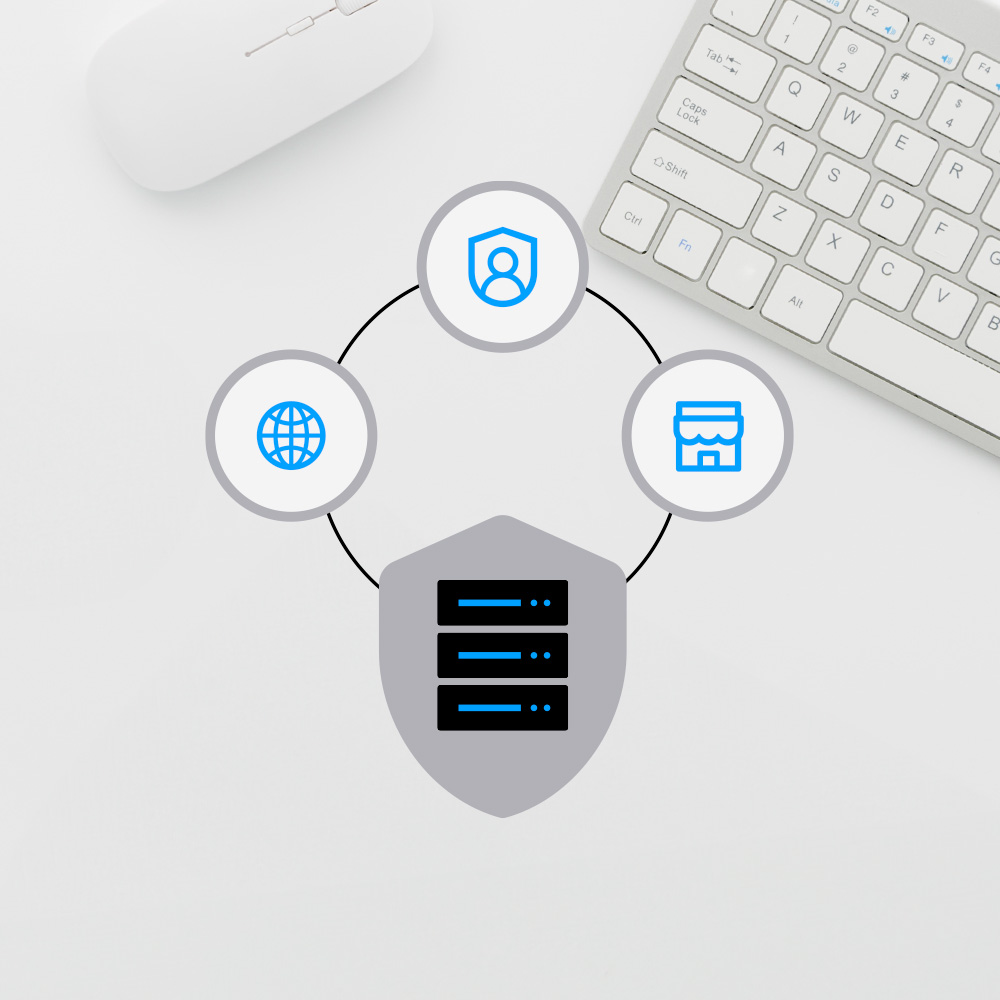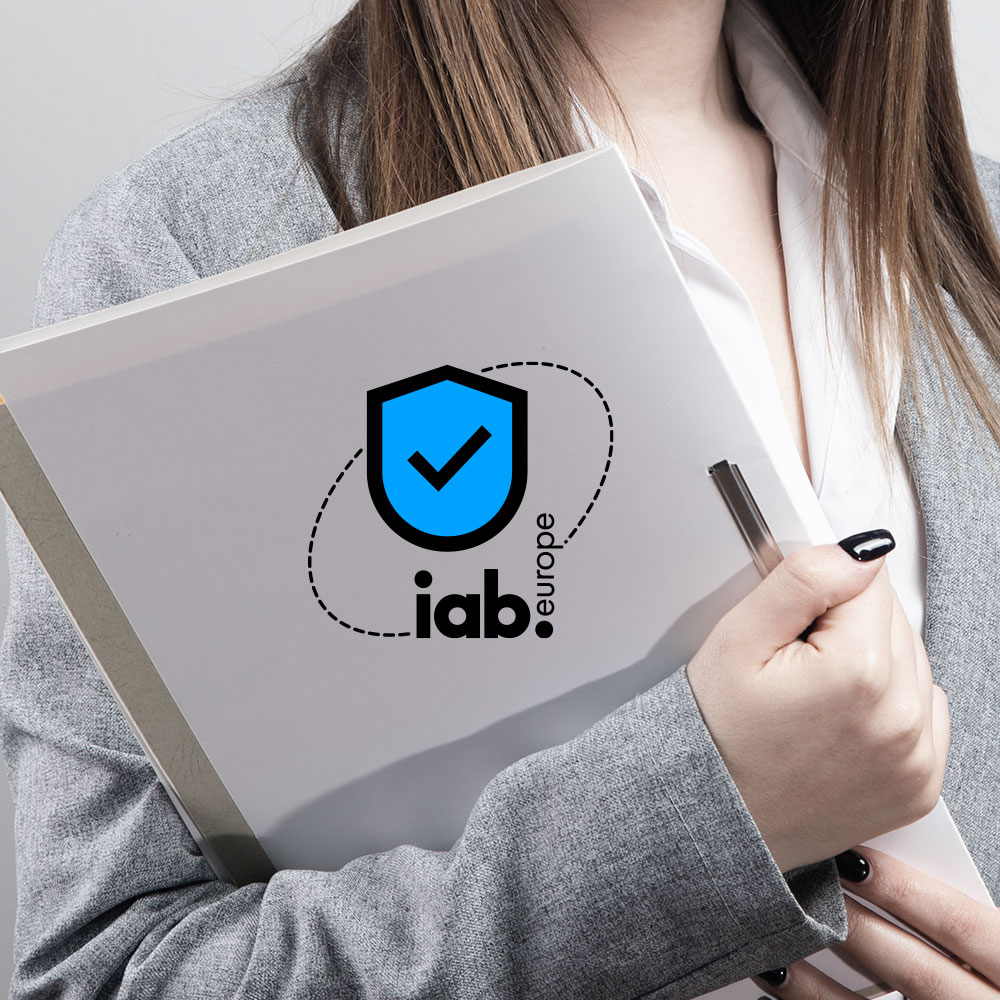Introduction to user data types
Businesses run on data, much of which comes from customers, website visitors, app users and others.
This data can come in many forms. It can be:
- explicit identifying information, like name, address or credit card number
- less explicit but can become identifying if combined with additional data points, like IP address, birth date, or country of residence
- based on what people do online or how they express interests and preferences, like browsing history, ecommerce activities, or signups for marketing communications from companies.
All of this is personal data, and in some cases personally identifiable information (PII). Some of it can fall into the category of sensitive personal information.
For business purposes, and especially marketing, user data falls into four main categories:
- Zero-party data
- First-party data
- Second-party data
- Third-party data
Companies are becoming more strategic about what data they want and what they want to use it for, as well as how it can best provide a strategic advantage.
There are valuable uses in marketing strategy for all these types of data if used in the ways regulations allow and for the purposes to which they’re best suited. We examine what makes up the different types of user data, benefits and risks of each type, and best practices for data collection so companies can compliantly obtain user data to make data-driven business decisions.
Zero-party data
What is zero-party data?
Zero-party data, also referred to as explicit, opt-in or self-reported data, is sometimes described as the “Holy Grail” or “future of marketing”. It’s data that customers, visitors, and users intentionally and voluntarily share with a company, typically when prompted by the company.
Zero-party data doesn’t rely on third-party sources for collection and doesn’t require analysis or inference of user preferences because the user has explicitly stated them.
Examples of zero-party data
- Data explicitly shared by customers through quizzes, polls, surveys or feedback forms.
- Preference data, such as favorite products or services, directly provided by the customer.
- Personal information shared willingly by customers for personalized experiences.
- Data from customer-initiated interactions, such as product ratings or reviews.
- Information from opt-in forms where customers provide data in exchange for benefits or rewards.
Developing a zero-party data strategy
Zero-party data is information that customers willingly give, which means that businesses can trust this data and use it to understand customer preferences and behaviors. Such insights are invaluable for creating personalized marketing messages and sharing product recommendations that are highly relevant to each individual customer. This, in turn, is good for business growth. McKinsey reported that fast-growing companies generate 40% more revenue from personalization than others.
The direct feedback and preferences collected in the form of zero-party data can also be used in product development and innovation, guiding businesses in refining existing products or developing new ones that better meet customer needs. This alignment with customer desires enhances product relevance and improves the customer experience.
What are the benefits and challenges of collecting zero-party data?
Benefits
Zero-party data gives users control over their data, as they’re in charge of at least some of the personal information they share and for what purpose or benefit. However, if consumers are mainly focused on a specific one-time reward (e.g. sharing information to enter a contest) the data may not be fully accurate as they might be providing it just to get that reward. Companies need to use smart, longer-term strategies and careful messaging to avoid this.
Zero-party data solves several problems for companies as consumers become more concerned about data privacy and global regulations restrict how personal data can be collected and used. This data type meets several requirements for valid consent per various regulations, including the General Data Protection Regulation (GDPR):
- freely given
- specific
- informed
- unambiguous
The full list of requirements for valid consent under the GDPR, which remains the source of many privacy best practices, is as follows.
Separate consent is not required since the company only has access to the data because the customer voluntarily provides it. It’s also fairly easy to enable zero-party data use to meet the requirement of being easily withdrawn as well, as a person can unsubscribe from a company’s communications, close an account, etc.
Challenges
The biggest challenge to the growth of access to zero-party data is that consumer trust ratings remain low. According to Salesforce, 74% of consumers believe companies collect more personal data than they need, and 61% believe companies aren’t transparent about personal data usage.
Companies must earn trust over time and across channels by demonstrating transparency and respect for user privacy and providing consistently positive and beneficial experiences before customers are willing to exchange data for discounts, targeted communications, product recommendations, or other benefits.
First-party data
What is first-party data?
First-party data, sometimes also referred to as customer, proprietary, owned or in-house data, is obtained in the next most direct way after zero-party data.
Insights derived from it can sometimes be less accurate than with those from zero-party data, but it is still a very important data source for companies’ data strategy.
Examples of first-party data
- Data gathered from website analytics, such as page views, session duration, and click patterns.
- Records of online purchases, including items bought, transaction amounts, and purchase history.
- Mobile app usage data, such as in-app purchases, frequency of use, and features accessed.
- Data gathered from social media profiles, like comments, likes, shares, and follows.
- Data on email opens, clicks, and responses to marketing campaigns.
How first-party data enhances marketing efforts
First-party data, obtained from customer interactions with a company’s online platforms, has value in uncovering patterns and preferences that customers indirectly express through their actions. This insight is important for segmenting audiences, personalizing marketing messages, and developing predictive models based on customers’ browsing and purchasing habits.
First-party data is also instrumental in evaluating the effectiveness of marketing campaigns and accurately interpreting return on investment (ROI). By analyzing how customers interact with different campaigns, businesses can optimize their marketing budgets, tailoring their efforts to what resonates most with their audience.
First-party data strategies in advertising
First-party data offers a straightforward way for companies to show customers what they have already expressed interest in. For instance, if a customer frequently browses outdoor camping gear on a website, the company can target ads to them featuring new arrivals in camping tents or special offers on hiking equipment.
In addition to showing specific ads to specific users, first-party data also enables more accurate targeting of advertising to specific customer segments. By understanding customer behaviors and preferences, companies can direct their ads to groups that are most likely to respond based on aggregated data, making the ad spend more efficient.
Retargeting campaigns also become more effective as they are based on actual customer behavior, like adding products to a cart without making a purchase. Companies can use this data to send cart abandonment emails, which helps in bringing customers back to complete the transaction.
Read about first party data marketing now
How do I collect first-party data?
First-party data is what companies collect from customer web activity via their own channels where consumers interact with the company, including:
- websites
- ecommerce shops
- mobile apps
- social media channels
It includes a broad range of data that can reveal not only who a user is — from IP address to login credentials to timestamps and ecommerce activity — but also what gets their attention and is of interest to them, such clicks, time spent on page or site, scrolling, hovering, and assorted navigation.
Ideally, companies want to use a multi-channel approach to get a wider variety of data to create a more comprehensive picture of the customer, while avoiding duplication. Once collected, first-party data is stored in customer relationship management (CRM) platforms, and does require analysis and activation via other systems to be useful.
What are the benefits and considerations of collecting first-party data?
Benefits
First-party data is most useful in aggregate, using many data points to build customer profiles. This is used for targeting or marketing personalization activities or grouped to create larger anonymized demographic profiles.
Some of the major uses and benefits of first-party data include:
- improved segmentation of different prospect or customer groups by interests, demographics, products, topics, etc.
- higher quality leads
- lower unsubscribe rates
- improved conversion rates
- increased revenue
It also enables companies to retarget consumers with relevant messages or offers after they have engaged with the company.
Challenges
Companies must obtain consent to collect and use this data through cookies and other tracking technologies on websites. Global data protection regulations also increasingly require companies to notify consumers of this type of data collection and, in some cases, to opt out of it, or at least opt out of the sale or certain uses of it. A consent management platform (CMP) enables this notification and consent collection.
Second-party data
What is second-party data?
Second-party data refers to information that a company obtains directly from another organization, rather than collecting it themselves from their customers (first-party data) or purchasing it from a data aggregator (third-party data). Essentially, second-party data is the other company’s first-party data, which it shares or sells.
This type of data exchange often happens between businesses that have a complementary relationship but are not direct competitors. For example, a travel booking website might share its data with a hotel chain, providing insights into customer travel preferences. This partnership allows both companies to benefit from enhanced data without directly competing.
Examples of second-party data
- Sales data that retailers share with manufacturers to help optimize product offerings.
- Survey responses from a trusted partner.
- Customer demographic information from a partner organization.
- Data obtained from sponsoring events or webinars that attract a shared target audience.
- Data shared between companies in the same industry but with different market focuses, like an airline and a car rental service.
What are the benefits and risks of collecting second-party data?
Benefits
Collecting second-party data gives companies access to high-quality information that another organization has gathered directly. By accessing data from a complementary business, companies gain new insights and an enhanced understanding of a shared customer base that their own first-party data might not reveal.
For example, if an automotive dealer shares data with an insurance company about the types of vehicles sold and customer demographics, the insurance company can use this data to tailor their insurance packages and pricing, which might not be apparent from their own claims data.
Additionally, these data sharing arrangements are typically grounded in mutual trust and clear terms of use, ensuring a level of transparency in how the data is handled.
Challenges
Data sharing arrangements between these partners are built on trust, but companies are still responsible for how they handle and protect customer information.
Companies must ensure second-party data adheres to privacy laws and regulations or risk penalties for GDPR violations, as well as other penalties including data privacy laws in the US, depending on where users are located. Further, the Digital Markets Act (DMA) places strict obligations to obtain explicit user consent for data collection from users in the European Union and/or European Economic Area, and companies must ensure the second-party data they acquire complies with the provisions of the DMA law.
There’s also the risk that the shared data might not be completely relevant or accurate for the receiving company’s specific needs, which can limit its usefulness. Depending on an external source for data can be risky, especially if the partnership changes or ends.
Finally, integrating second-party data into existing systems can be complex, requiring careful data management to ensure compatibility and effective use.
Read about Big data marketing now.
Third-party data
What is third-party data?
Third-party data, sometimes also referred to as external, aggregated, derived or purchased data, is obtained indirectly from advertisers, data aggregators, and other sources, including via third-party cookies and other tracking technologies. It’s not provided to a company by the user or via their interactions or activities with a specific organization.
Third-party data typically needs to be aggregated with a lot of other first-party and third-party data to be valuable, and sometimes consists of multiple datasets “stitched” together.
Examples of third-party data
- Demographic information purchased from data aggregation companies.
- Interests and behavior data acquired from data brokers.
- Purchase intent data from market research firms.
- Social media sentiment data collected by a social listening company.
- Browsing history and online behavior data gathered by ad networks.
What are the benefits and challenges of collecting third-party data?
Benefits
Collecting third-party data provides extensive market insights, offering a wide-angle view of consumer trends and behaviors that go beyond a company’s direct reach. Additionally, third-party data often comes at a lower cost compared to conducting in-depth primary research, making it a cost-effective option for gaining market intelligence. It also aids in competitive analysis, offering insights into what competitors might be doing and industry benchmarks.
Challenges
With third-party data, the companies that need it aren’t able to be specific about what data they need, since they’re not the ones collecting it. The company also often doesn’t know the source(s) of this data, its accuracy, how recent it’s, or other often important criteria to rely upon it entirely.
With the high volume and disparate sources, the quality and relevance of the data can be limited. On a small scale, this data may be less useful to companies, as it says little about who the user is or what their preferences are.
A company’s competitors could also buy and be using the exact same data, meaning that a company has no competitive edge unlike with zero-party and first-party data.
There are also regulatory requirements to consider with third-party data. Like with second-party data, companies must ensure the third-party data they acquire adheres to privacy laws and regulations or risk penalties for violations and loss of user trust.
There have also been consent issues with collecting, processing, and selling this kind of data, as it’s quite common for users to have no idea it’s been collected or sold, and thus no chance for them to object to it. As this Wharton School article notes, “Most people don’t know how much of their activities are being tracked.” Additionally, in the same piece, Elea Feit, senior fellow at Wharton Customer Analytics and Drexel marketing professor added, “Most companies are collecting data these days on all the interactions, on all the places that they touch customers in the normal course of doing business… Every time you interact with the company, you should expect that the company is recording that information and connecting it to you.”
Depending on the relevant regulation, not notifying customers or users during these interactions may be a violation of the required notification of users about data collection, purposes, and sharing with third parties, as well as the ability to opt in or out of collection, sharing, sale, or other certain uses.
Google has made several announcements over the past few years regarding the eventual end of third-party cookie use in the Chrome browser (which maintains majority market share).
Google made and canceled proposals for replacing the use of third-party cookies, and pushed back the deadline for a full phase-out several times. In light of this, it makes sense for marketers to move toward smarter, more future-proof solutions.
Third-party data: implications of data breach
The cost of data breaches is rising. According to IBM, the global average cost of a data breach was $4.45 million in 2023, which is a 15% increase over 3 years.
While the company that collects data from customers is usually responsible for the financial and reputational repercussions of a data breach, companies that obtain third-party data must do their due diligence before entering into any agreements to ensure that their data partners adhere to stringent data protection standards.
This includes:
- conducting a data privacy audit to evaluate compliance with relevant privacy laws
- understanding the data provider’s security measures
- ensuring there are clear protocols for data handling and breach response.
Such diligence helps mitigate risks associated with third-party data, including any potential legal liabilities and damage to customer trust.
Read about Big data marketing now
Third-party data providers and data sharing agreements
For businesses partnering with third-party data providers, a data sharing agreement clearly defines how this data is used and protected. This agreement serves as a roadmap, specifying the types of data being exchanged, the intended purposes, and the security protocols in place. It ensures that both parties have a mutual understanding and clear expectations about data handling, usage, and privacy.
Ensuring that the third-party provider complies with relevant data protection laws is a key component of these agreements. This due diligence helps mitigate risks associated with data misuse and breaches.
The agreement should also address who owns the data, how long it can be used for, and how it’s disposed of after the agreement ends. Provisions for regular audits of the third-party provider are crucial to ensure they continue to adhere to the agreement’s terms.
Understanding the effects of blocking third-party cookies and site data
Technology shifts are a big reason for companies to move away from the use of third-party data. For example, ad blockers, third-party cookie settings and browser restrictions can make it increasingly hard to obtain this data in the first place.
Ad blockers continue to be popular browser add ons and are getting more sophisticated in what formats they block and how many. Some blockers may only target popups. Others may pick up on JavaScript usage, or attempt to block all ads. Some ad blockers go further than ads, blocking tracking for analytics use, and can even interfere with cookies and technologies that enable or affect user experience with sites’ ability to function correctly.
Some browser providers are changing some default settings. This can include functions like removing URL tracking parameters, spoofing or stripping referrals IDs, or setting limits on if and how websites can store cookies on users’ browsers. Apple has introduced Intelligent Tracking Prevention (ITP) for Safari and Mozilla has Enhanced Tracking Protection on their Firefox browser. We noted earlier some of Google’s initiatives away from third-party data with Chrome.
As consumers become more aware of and concerned about privacy, and as more data privacy laws come into effect, the more technology will change away previously common methods of tracking and data access. Some of these will be precise, some won’t, and, as noted, will affect user experience beyond their intent. It’s important that marketers evolve their strategies to ensure continued access to and consistent quality data, as well as privacy compliance and earning user trust, as technologies and regulations evolve.
Differences between the types of data
Zero-party data vs first-party data
Source
The most obvious difference between zero- and first-party data is its source. Zero-party data comes directly, intentionally and voluntarily from users. They know it’s being collected because they’re providing it — typically for some benefit to themselves — and for a specific purpose. This generally means the data is high quality and doesn’t require an additional request for consent, since the company simply wouldn’t have it if the user didn’t want them to.
First-party data, meanwhile, is user information that’s often gathered passively as part of doing business. While the customer provides this information, it’s typically as part of a transaction or interaction, rather than a proactive sharing of their preferences or desires.
Quality
Zero-party data is high-quality data that can be used to improve conversion rates, enable better targeting, build trust, and generate positive experiences and long-term consumer relationships with the brand by demonstrating transparency, respect for the user’s preferences, and enabling personalized experiences. It can be useful and valuable without requiring aggregation and analysis.
First-party data is also high quality and is particularly useful when aggregated to display trends and patterns. Collection of enough first-party data to demonstrate broader patterns and provide valuable insights can take some time. Some first-party data points, like purchase history, are directly beneficial for personalizing ads and content, without data aggregation.
First-party data vs third-party data
Source
First-party data is collected directly from a company’s customers or users, typically through interactions with the company’s website, products, or services. This data includes user behavior, transaction history, and preferences.
In contrast, third-party data is acquired from external sources, such as data aggregators or providers, and is not collected directly from the company’s user interactions.
Quality
The direct collection method typically makes first-party data more accurate and relevant to the company’s specific needs. It reflects the actual behavior and preferences of the company’s customers.
On the other hand, third-party data, while broader in scope, may not always offer the same level of precision or relevance, as it’s aggregated from various sources and might not be tailored to specific business needs.
Privacy and compliance
Privacy concerns and compliance with data privacy regulations are more straightforward with first-party data, as it involves a direct relationship between the company and its customers. Companies have more control over consent and data policies and practices.
However, with third-party data, ensuring compliance with privacy laws can be more complex. It involves data collected by external entities with varying privacy practices and over which the company acquiring the data has no control.
Differences between zero-party, first-party, second-party and third-party data
Best practices for data collection
1. Use a consent management platform to get valid consent
Legally compliant consent to collect user data has several requirements, depending on the user’s location, including:
- explicit, opt-in consent (or opt out consent if the user is based in one of the US states that follow this model of consent)
- granular consent options, meaning users can allow data to be used for some purposes and deny its use for othersconsent that’s easy to withdraw or revoke
- transparent and easily accessible privacy policy that explains what data will be collected, for what purpose, and who may have access to it
- clear, simple and non-legal language used in the privacy notice and cookie consent banners, sharing what data is being collected and why
Using a consent management platform (CMP) like Usercentrics CMP streamlines data collection practices to align with legal standards and respect user preferences.
2. Implement robust data security measures
Having strong data security measures in place safeguards sensitive customer information from unauthorized access or breaches. This involves using encryption for data, securing networks, and establishing strict access controls.
Regular updates to security protocols and training employees about potential cyber threats are critical to maintaining the integrity and confidentiality of collected data.
Privacy policies should be regularly updated to reflect current data collection practices and comply with evolving data protection laws. Keeping privacy policies current and accessible ensures users are informed about how their data is used and protected, further strengthening trust and compliance.
3. Collect only necessary data
Adopt a data minimization approach and collect only the data that is necessary for a specific purpose. This makes data management simpler and more secure and reduces the chances of misusing data because there’s less of it to handle.
It also streamlines the consent experience for customers, making their interactions with the company smoother and more straightforward as they’re asked to share less data.
4. Check for vendor and third-party compliance
When sharing data with vendors or third parties — or acquiring second-party or third-party data — ensure vendors, partners, and third parties also comply with data privacy standards.
This involves conducting due diligence before sharing data and regularly auditing their compliance. Such measures help in mitigating risks associated with data handling by external parties.
5. Conduct regular data privacy audits
To maintain data integrity and legal compliance, companies should periodically conduct data privacy audits to examine their data practices. These audits involve assessing whether the methods of collecting and storing customer information align with current data protection regulations. They also include reviewing how the data is used within the company, ensuring it aligns with the purposes for which it was collected.
Through these audits, businesses can identify areas for improvement in data handling and processing, enhancing both security and efficiency in data management.





